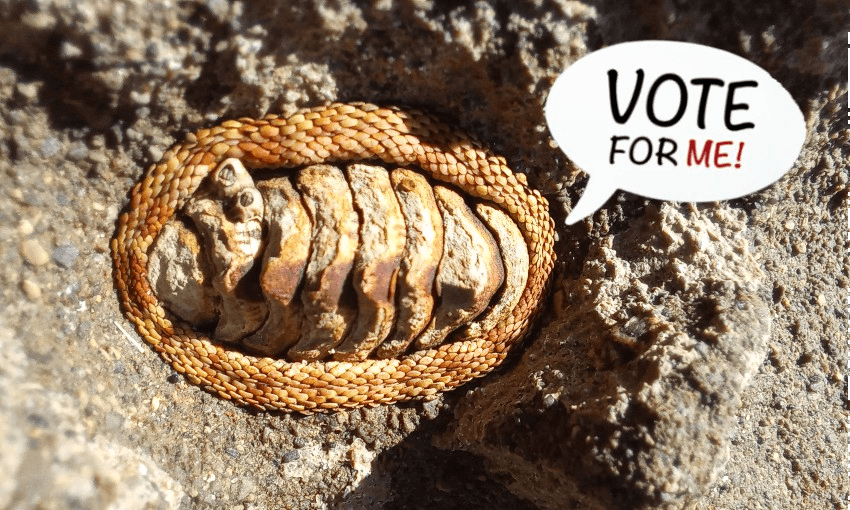A humble New Zealand mollusc is suddenly in the global spotlight, and now it’s up to New Zealanders to help it claim victory. Biologist Priscila Salloum explains why the snakeskin chiton deserves your vote.
Snakeskin chiton, a common mollusc on the New Zealand coast, has beaten off more than a hundred competitors from all corners of the world to be a contender in Mollusc of the Year 2021.
My colleagues told me about this worldwide contest last year, and we knew New Zealand had just the perfect species for it. The aim of “Mollusc of the Year” is to showcase molluscs as the extraordinary animals they are, while also encouraging research and inciting general interest in this extremely diverse group. The winning species will have its whole genome sequenced, and the data will be made available for the nominators of the winning species (hopefully us!)
Molluscs are the second largest animal group in number of species on the planet, and the one with the largest diversity in body shape, size, habitats and behaviours. They can be found on land, freshwater, reefs and in the deep sea, and are familiar to most of us as mussels, clams, snails, slugs and squids. They have a soft body, usually covered by a protective shell, although some species have an internal shell, and others have lost their shell over time.
Because of the striking diversity of the mollusc group, there is much to learn from them, and a sequenced genome is an invaluable resource that can uncover information we currently don’t have.
The competition was launched by Frankfurt’s Senckenberg Museum, one of the largest natural history museums in Europe. The general public is urged to vote, choosing from five mollusc contestants that were selected by a scientific committee at the museum and the Senckenberg`s Centre for Translational Biodiversity Genomics (LOEWE-TBG).
Of the five finalists, one is a chiton – the New Zealand mollusc I nominated (how thrilled am I?), and the one every New Zealander must vote for. And here is why: chitons are ancient organisms, originating half a billion years ago. They survived climate cataclysms and mass extinctions, even outlasting the dinosaurs. They have an “ancient-looking” oval shape, with a shell split into eight superimposed plates that gives them flexibility. Similar to a slater, they can curl into a little ball for protection but most of the time they can be found clinging onto rocks where their metal teeth scratch the surface clean of algae and bacteria. This is why they’re also called “reef cleaners”.
There are around 50,000 known living molluscs, and approximately 600 chitons, but the New Zealand snakeskin chiton (Sypharochiton pelliserpentis) is a fascinating animal. Of all New Zealand 56 chiton species, they are the only ones that can survive out of water for long periods of time. About 3cm long, they live at the intertidal zone, which is the stretch of shore that gets exposed once the tide is out, and are able to endure long hours of air exposure, extreme heat and water loss. If we were to imagine the same in humans, it would mean someone losing 75% of their body water and not breathing for two thirds of the day.
And if all that didn’t convince you to vote for the snakeskin chiton, look closer at the photo below: nature has made a beautiful snakeskin to encircle the chiton’s shell. Public voting is open until Sunday.

